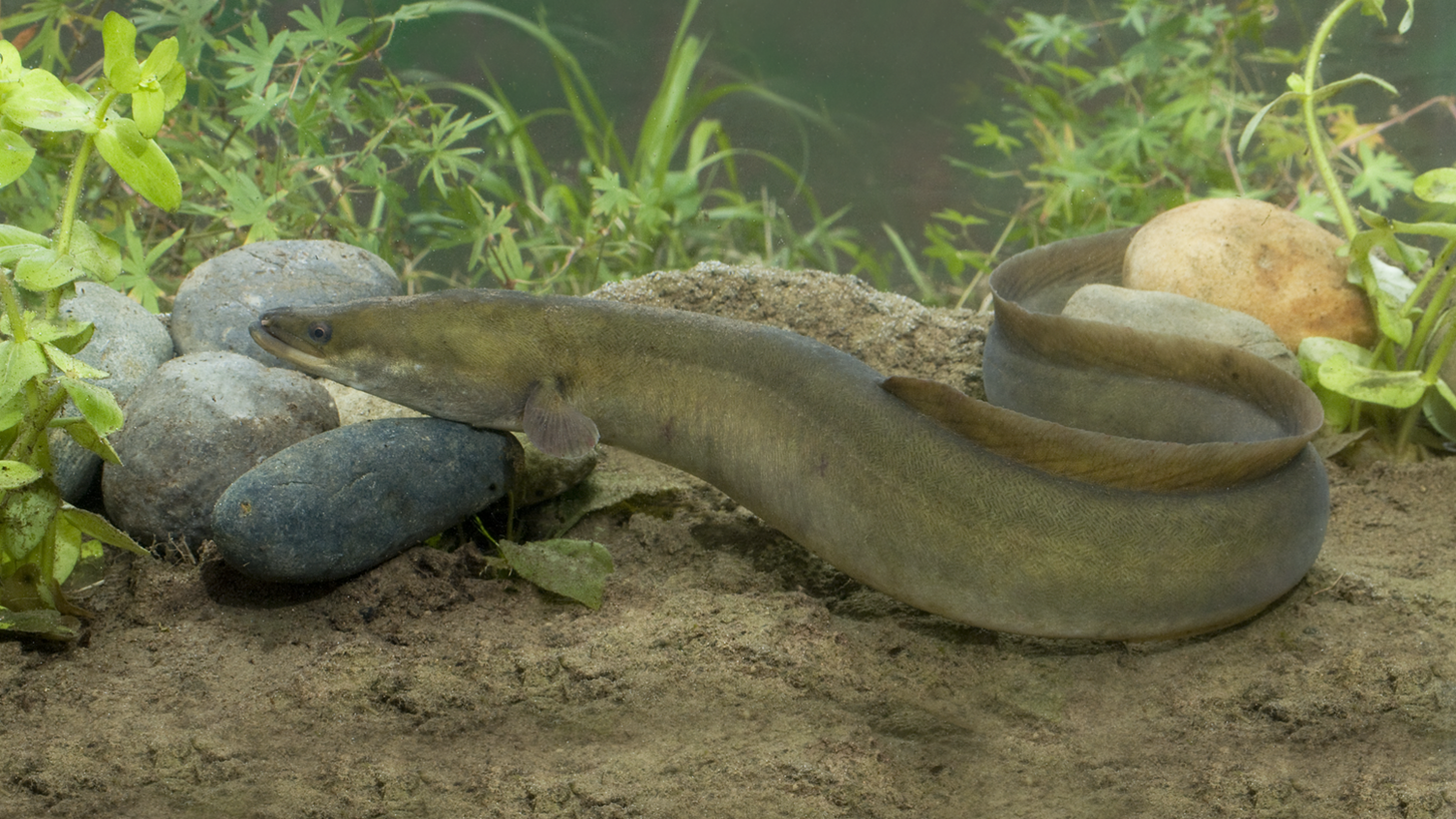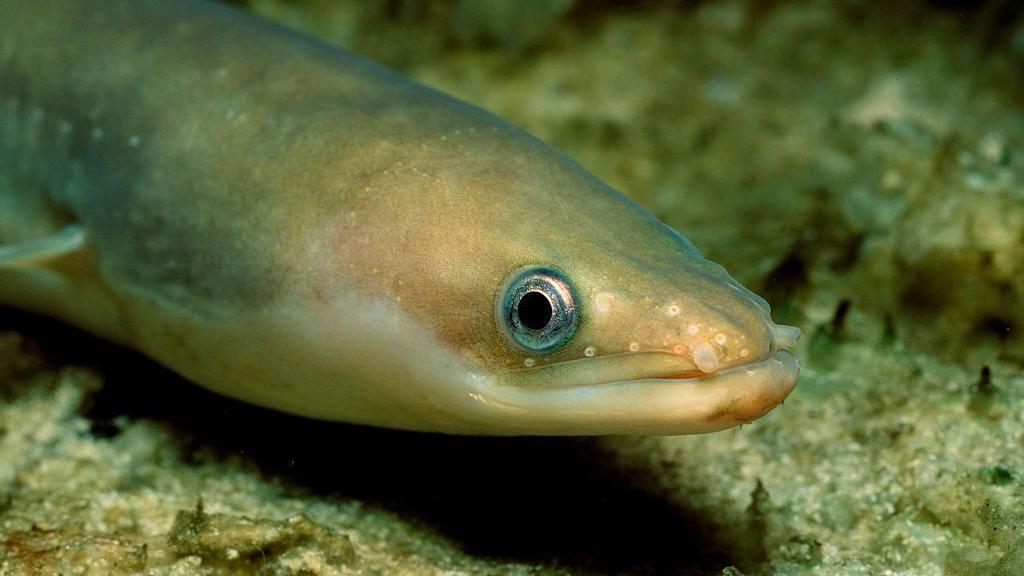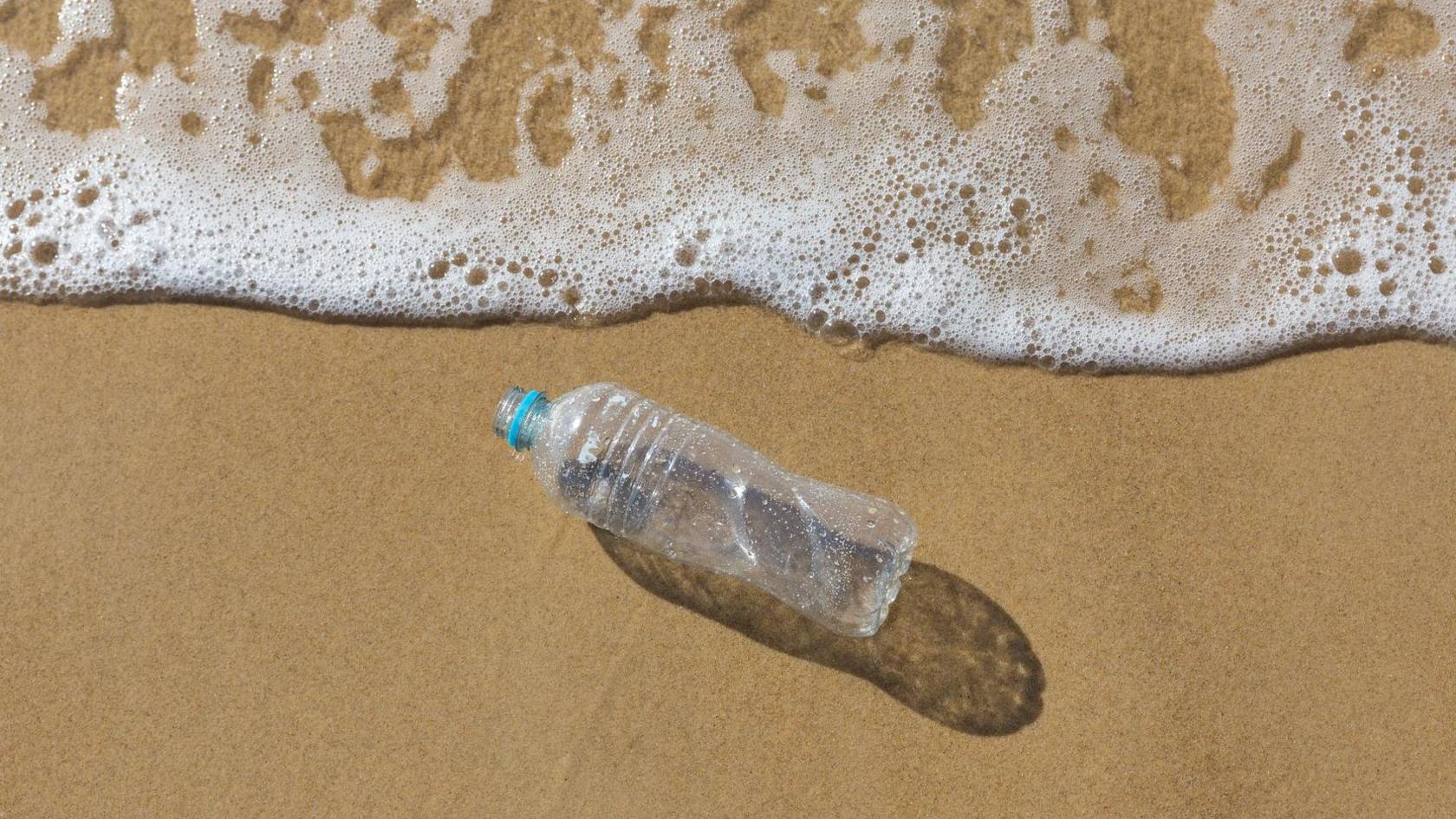Dedicated 'eel lanes' to be built to help migration

- Published
European eels were once a common sight in the UK, but they're now critically endangered, and part of the reason for this is due to barriers during their migration.
They make an incredible 4,000 mile journey across two continents when they're just the size of a pea to reach freshwater in the UK.
But man-made barriers like dams and weirs can make this epic migration much harder.
That's why a new plan to create "eel lanes" around these structures is underway at the South Downs National Park.
More stories like this
- Published1 May 2024
- Published29 May
- Published5 December 2024

These "eel lanes" act like a narrow lane of water so eels can swim around the barriers in the way of their migration.
In some places, eel brushes are also being added - they're strips of bristles to help eels make their way upstream.
The project has been launched in partnership with the Western Sussex Rivers Trust to protect the habitat of the eel in the Rother and Ems rivers.
Aimee Felus, chief executive of the trust, said: "With pollution, sewage and drought all playing a part in the diminishing water quality of our rivers and streams, it's more important than ever that we work together to help protect and enhance these precious habitats for wildlife and humans alike."
The migration of the European eel

European eels begin their lives in the Sargasso Sea, off the coast of Bermuda, as little larvae that look like a transparent leaf.
They spend the next one to two years drifting across the Gulf Stream as their body flattens and elongates into what's known as the 'glass eel' stage.
When they eventually reach the English coastline, they're about 8cm long. They use the force of the tides to push themselves upstream to make a home in rivers, including the Rother and Ems.
Once they're in freshwater, they continue to transform, changing colour and growing up to 1m in length.
They can live up to 20 years before they then make the 4,000 mile journey back to the Sargasso Sea to spawn.
More like this
- Published24 November 2024

- Published22 August 2024

- Published22 August 2024

